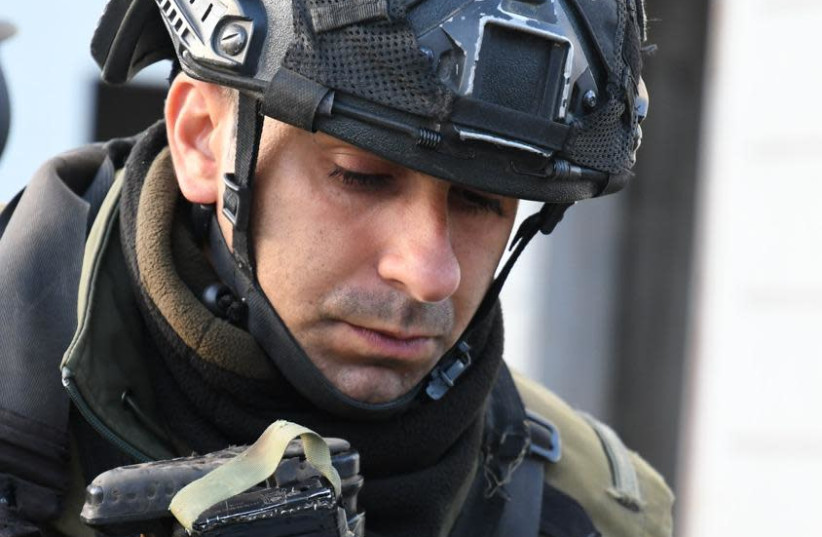More than half a year since Operation Guardian of the Walls, the 53rd Armored Battalion will be receiving an operational citation from IDF Chief of Staff Lt.-Gen. Aviv Kohavi for their work during th May war.
“It’s a meaningful event because it shows what the battalion has done over the past year,” said battalion commander Lt.-Col. Dori Saar.
Saar and his battalion were deployed to the Gaza vicinity when the nightly disturbances at the fence by Gazans began, a month before the war with Hamas and Palestinian Islamic Jihad broke out.
Though the operation was mainly an air campaign, the 11 days of fighting saw unprecedented cooperation between forces, with the armored corps, infantry, intelligence, navy and air force working together to carry out their missions against terrorist groups in the Gaza Strip.
Saar told The Jerusalem Post shortly after the ceasefire came into effect that his battalion alone struck around 70 targets in the Strip, including anti-tank guided missile (ATGM) cells, launchers, tunnel infrastructure and more. The strikes were all done with the tanks still in Israeli territory, without crossing into the enclave.

“We showed that we can work together with Maglan special forces, infantry, air force and others,” Saar said. “It’s a big achievement for the battalion. I’m proud of this award, and so are the fighters in the battalion.”
When the Post met with Saar in June, he was already crowing of the battalion’s achievements.
“We all spoke the same language on the same system,” he said, “and that’s what made this operation successful. ‘Together we win’ is the motto of our battalion, and I really believe that if we work together, the synergy will allow us to win.
“When the ground forces and air force work together to close a circle against targets quickly, you accomplish a lot. Close the circle quickly is the name of the game. Those who are quicker win.”
After eight months of operational deployment along the Gaza border, Saar and his troops are currently in the Golan Heights for training.
“Here we need to learn about Hezbollah, which is different than Hamas in terms of their capabilities and how we act against them.” Not only do troops need to train on maneuvering in the North, he said, but against the threats posed by the Lebanese terrorist army.
“Hezbollah has a lot more anti-tank guided missiles than Hamas, and we need to deal with ATGMs, enemy infantry forces, and other explosives during maneuvering while making sure that we get to our targets deep inside enemy territory,” Saar said.
While Israel’s North is quiet, with international attention focused on talks surrounding Iran’s nuclear program and the failing of the Lebanese state, Saar said that Hezbollah hasn’t been sitting around quietly.
“Iran and Hezbollah are always trying to increase the strength of their capabilities, especially in the Golan and Lebanon,” he said. “It’s very quiet here, and there haven’t been any incidents recently, but it doesn’t mean that Hezbollah isn’t working to collect intelligence and gather targets for the next war.”
Though the defense establishment does not see a war breaking out with Iran or its proxies such as Hezbollah in Syria, Israel’s military has increased the amount of preparatory training for troops and reserve forces.
The IDF held large-scale drills in the North over the months of October and November, and plans to hold 50% more drills in the upcoming year than it did in 2020, and 30% more than in the past year.
The increased number of exercises planned follow years of stagnation, and will be the largest amount of training in five years – especially for reserve forces.
The drills will prepare troops and commanders for future wars, with new equipment and tactics that will allow them to work better with the different branches of the military as part of the IDF’s multi-dimensional battlefield scenarios.
